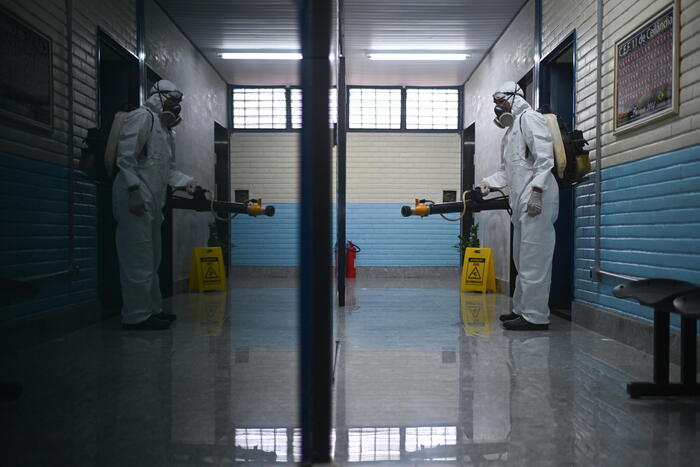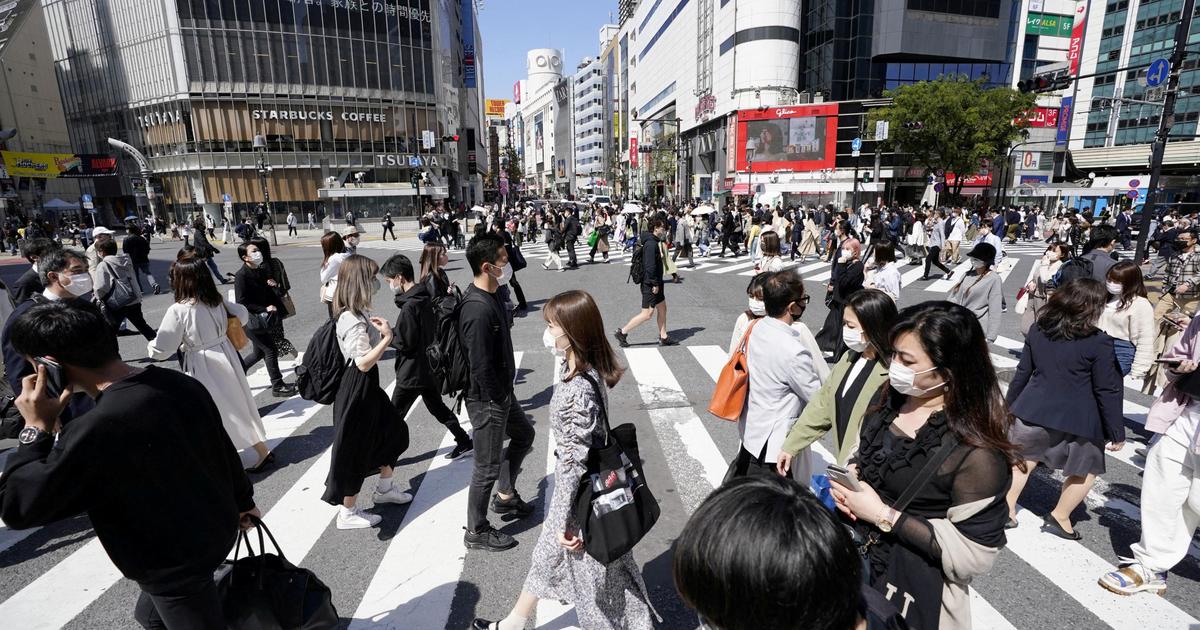Paula galinsky
02/10/2021 18:45
Clarín.com
Society
Updated 02/10/2021 6:45 PM
More than eleven months of pandemic and
two million infected
.
To get to the first million it took about 7 and a half months.
On the other hand, in a little more than 3 months we already surpassed the second.
The coronavirus curve accelerated and part of the explanation is that we went from strict quarantine to a more flexible ASPO and then to DISPO.
In this last section, infectologists highlight
two positive data
: that the "new" infected are younger, which is why serious cases and the fatality rate fell;
and that the tests increased significantly, although we continue with
less than those recommended by the WHO
.
On March 3, 2020, the Ministry of Health of the Nation confirmed the first positive case of coronavirus in Argentina.
It was
a 43-year-old man
who had returned two days earlier from Milan, Italy.
With the arrival of the virus, the lives of all Argentines began to change.
Exactly 17 days later, a
strict quarantine
began
.
First, celebrated by the vast majority.
Later, criticized by some sectors for the negative economic consequences.
“During the first months, the daily cases were
100 or 200 infected
.
Only in June did the situation begin to change.
On the 1st of that month, 564 positives were registered, on June 6 we exceeded 1,000 infected for the first time and by 19 they reached 2,060 ”, reviews Eduardo López, an infectious disease specialist at the Gutiérrez Hospital and member of the expert committee that advises the President.
The famous peak was recorded in October last year.
On the 16th of that month, the Health portfolio accounted for 16,546.
On October 19, Argentina exceeded the first million infected.
On the 21st, we reached
18,326 infected in a single day.
CASES
2.001.03444.028
per million inhab.
The road to two million
DEATHS
49.6741.093
per million inhab.
Source:
Johns Hopkins
Chart:
Flourish
|
Infographic:
Clarín
By the end of October,
the figure started to drop
.
On the 30th of that month, 13,379 cases were registered, a figure close to what, until now, was the peak of 2021. On January 7, we had 13,835 infected.
“The October numbers coincide with the spread of the virus in the province of Buenos Aires and the interior of the country.
It was a month in which
there was not a day with figures less than 10,000 infected
”, López remarks.
The strict quarantine of the first months of the pandemic surely had to do with the fact that the number of daily cases remained low during a first stage.
Along the same lines, making the
measures more flexible
may help to interpret, in part, the increase.
Also the few tests that did not allow to identify infected and isolate them in time.
On October 19, the date on which we exceeded the first million infected, 28,395 tests were carried out.
That day there were 12,982 positive cases.
This means that about
45% of the swabs tested positive.
For the World Health Organization (WHO), a country is testing well when it has less than 10% positivity (the ideal is to reach 3%).
This means that out of 10 people,
less than one should test positive
.
By October we were a long way from meeting the WHO recommendation: almost half of the swabs were from people who had been infected.
Today, with 2 million infected, we have about
15% positivity
.
"This shows that the tests increased and that we are closer than expected, although there is still a way to reach what the WHO suggests," adds López, who highlights that "the fatality rate has been decreasing because the new infected
are younger
”.
The day of the first million infected: with 12,982 infected and 451 dead,
the fatality rate was 3.4%
.
Today, with 8,891 positives and 162 deaths, it is 1.8%.
López says that looking at Europe to find out what could happen to us in the coming months is not necessarily effective either: “There
the cases dropped a lot in summer and not here.
According to laboratory work, the virus circulates better in cold temperatures, between 5 and 11 degrees, and with more than 30 it loses viability.
However, that has not been seen in Argentina, in part it is likely to have to do with the fact that in the run-up to the festivities and during the vacation period many people did not respect the basic measures.
According to him, there were
certain behaviors
that occurred between the first and second million and marked this stage: it refers to important demonstrations, meetings for Christmas and New Year, clandestine parties and mass meetings on beaches or other tourist destinations.
Regarding the future, he assures that, to a large extent, we depend on vaccination.
“In the United States they are vaccinating more than a million people per day.
In our case, we may not be able to reduce the number of cases, but we will be able to reduce the number of
hospitalized people and occupied intensive care beds
.
The idea is that it also has an impact on lethality ”, he warns.
The increase in tests is one of the data on which Lautaro de Vedia, infectologist at Hospital Muñiz and former president of the Argentine Society of Infectology, puts the focus.
“Seeking more and doing it actively is key.
Perhaps the increase in swabs also has to do with the fact that in less than 4 months we went from one to two million ”, he says.
According to official data released by Worldometers, in terms of tests we are not well: we are
ranked 112 in a world ranking
with 142 thousand per million inhabitants.
Asked about this, De Vedia points out that this surely has to do with the fact that we were far below expectations and although we improved significantly, it will be difficult to reach the countries that top the list and that made many swabs from the beginning.
“The strict quarantine at the beginning helped limit the circulation of the virus and
give the health system time to prepare
.
However, at the beginning of the pandemic, not as many tests were done.
In fact, it took us quite a while to go out to find, swab, and isolate.
Today, with 14% or 15% positivity, we are getting closer to what the WHO is asking for, ”says De Vedia.
According to the Muñiz infectologist, the contagion curve
should slow down
: “On the one hand, because there are many people who already had Covid 19 and developed antibodies.
The other element is the vaccine that, little by little, we hope that it will limit the virus ”.
And he adds that it will be essential to reach the coldest temperatures with
immunized risk groups.
For Miguel Dictar, head of Infectology at the Alexander Fleming Institute, the important thing is not the number of infected, but the
number of serious cases
and their impact on the occupation of therapy beds.
“Younger people are getting infected and that makes fewer cases more complicated.
Anyway, we have patients in intensive care.
Most with comorbidities, ”says Dictar.
He agrees with De Vedia that having tested more led us to get from one to two million faster than from zero to the first million, although he also states that there was
a change in relation to community circulation
related to social behavior.
“In the moments of more restrictions it spread less.
If we relax the measures, it spreads easily, "he says.
He says that, from now on, we will not only have to see what happens with the vaccines but also "with the new strains and how quickly they spread."
$
Look also
Chile wants to avoid "covid tourism" and rules out vaccinating non-residents
No holidays this summer: Britain bans all travel for fear of coronavirus mutations








